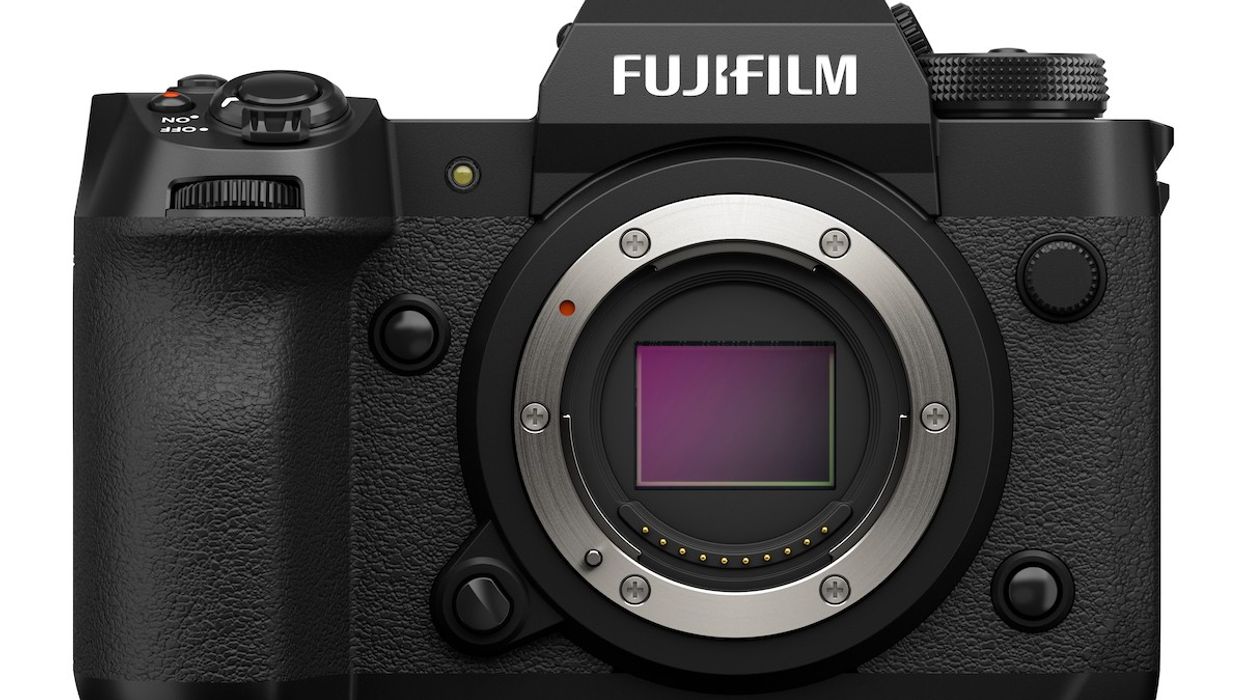The Brand-New Fujifilm X-H2 Has a Huge Selling Point You Need to Know About
Fujifilm releases the X-H2—which helps us understand that the "s" in the X-H2s really was all about speed.

Camera naming conventions sometimes have a lot of logic, but often have a bit of mystery. We've been waiting a long time for the follow-up to the Fuji X-H1 (a camera that was never the hit it should've been), and when it finally came earlier this year, it had a new letter added.
The X-H2S launched with a $2,499 price point and some amazing specs, including internal ProRes recording, 6.2K video and 4K 120p internal, and support for both Blackmagic and ProRes RAW, which remains relatively rare. But it had that "s" on the end, which was telling us more was coming.
That "more" is now here with the Fujifilm X-H2, the "prime" release with no modifier, and we get what it's all about.
Coming in at $1,999, the X-H2 is cheaper than the X-H2s, likely because it's less speedy. Its 4K only goes to 60p, and its rolling shutter is slower as well. But it's not just about cost savings. The Fujifilm X-H2 has a huge selling point that will make it interesting for many still photographers and even some motion shooters. It boasts a 40MP sensor, which is capable of 8K internal video.
Let's keep diving.

Slow and Steady Wins the Race
8K internal video recording, in ProRes, on a camera under $2,000 with an APS-C (or Super 35) sized sensor is just flat-out bonkers.
This is just more resolution that we thought we were going to see anytime soon out of these price points and formats. In fact, it's slightly more than the lenses, which aren't even engineered for that resolution. Does this mean you would never shoot on older lenses with the X-H2?

Probably not. Old lenses have personality and feeling. The vintage lens look is one of the major ways filmmakers can put their stamp on something. But it means if you want to shoot 8K video or 40MP stills, and then go in and pixel peep super-sharp images, you're going to want to work with the newest generations of lenses that are designed for this level of resolution.
Shooting with an older lens, even one of Fuji's beautiful X-series lenses, will work well on a smaller screen, but if you crop in, you'll likely see some lenses not keep up with the resolution.
Important Decisions
So the real decision point comes down to what type of shooting you are doing. If you are a portrait or still life photographer, or your motion work tends to focus on high-resolution shooting of slower-moving objects, you are going to lean toward the X-H2. However, I suspect more motion picture shooters are going to lean toward the X-H2s, which is going to have less rolling shutter, faster autofocus, and higher speed record times, even though it tops out at 6.2K instead of 8K.
6.2K, by the way, is a wonderful format to capture for a 4K UHD delivery. You've got a bit of cushion room around the frame for reframing if you need it, but the files are smaller than 8K, and you can still finish in 3820x2160 all day long and create really nice images.

BRAW and ProRes RAW
One of the other real standout features is supporting both Blackmagic RAW and ProRes RAW. These are the two competing "open" RAW formats, and generally, you see companies support one platform or the other. There are not a ton of cameras supporting both. But depending on your workflow, there are perks to both formats, and the biggest thing is that it fits into both of those infrastructures.
If you own an Atomos recorder, you can shoot ProRes RAW, and if you own a Blackmagic Video Assist, it's Blackmagic RAW for you. This seems like a savvy move on Fuji's part to attract shooters no matter what infrastructure they have built.
The big outstanding hurdle is that Blackmagic needs to support ProRes RAW in Resolve, but that might be a while if it ever happens at all.
I Love It When a Plan Comes Together
It was a wait for the Fujifilm X-H2, and we had many theories about why. But now here we are, and we're seeing the whole platform come together. It makes sense that Fuji was waiting for a release that packed a punch. Even better, all the accessories, such as the battery and transmitter grips, and the rear external fan, are compatible with both the X-H2 and X-H2s.
FUJIFILM X-H2

- 40MP APS-C X-Trans5 BSI Sensor
- 7-Stop In-Body Image Stabilization
- 8K 30p, 4K 60p, FHD 240p 10-Bit Video
- 5.76m-Dot OLED Electronic Viewfinder
- 160MP Pixel Shift Multi-Shot
- 20 fps E-Shutter, 15 fps Mech. Shutter
- CFexpress Type B & SD UHS-II Card Slots
- ProRes Raw, Blackmagic Raw via HDMI
- Intelligent Hybrid Autofocus
While camera manufacturers focus on full-frame or MFT sensors, Fuji has calmly carved out a massive trench for itself in the APS-C format. We found it difficult to find any other hybrid camera with that resolution and price point on the market.
Image-wise, the only thing we can compare to the X-H2 is the BMPCC line or the ARRI Alexa Super35 cameras. So, if you're in the market for a new Fuji camera, the X-H2 is now available for pre-order and will start shipping on Sept. 29.
What do you think of the new X-H2? Would you prefer its speedier sibling? Let us know in the comments!
Check out weekly specials, deals, and rebates: Pro Video Gear, Pro Audio Gear, Lighting











